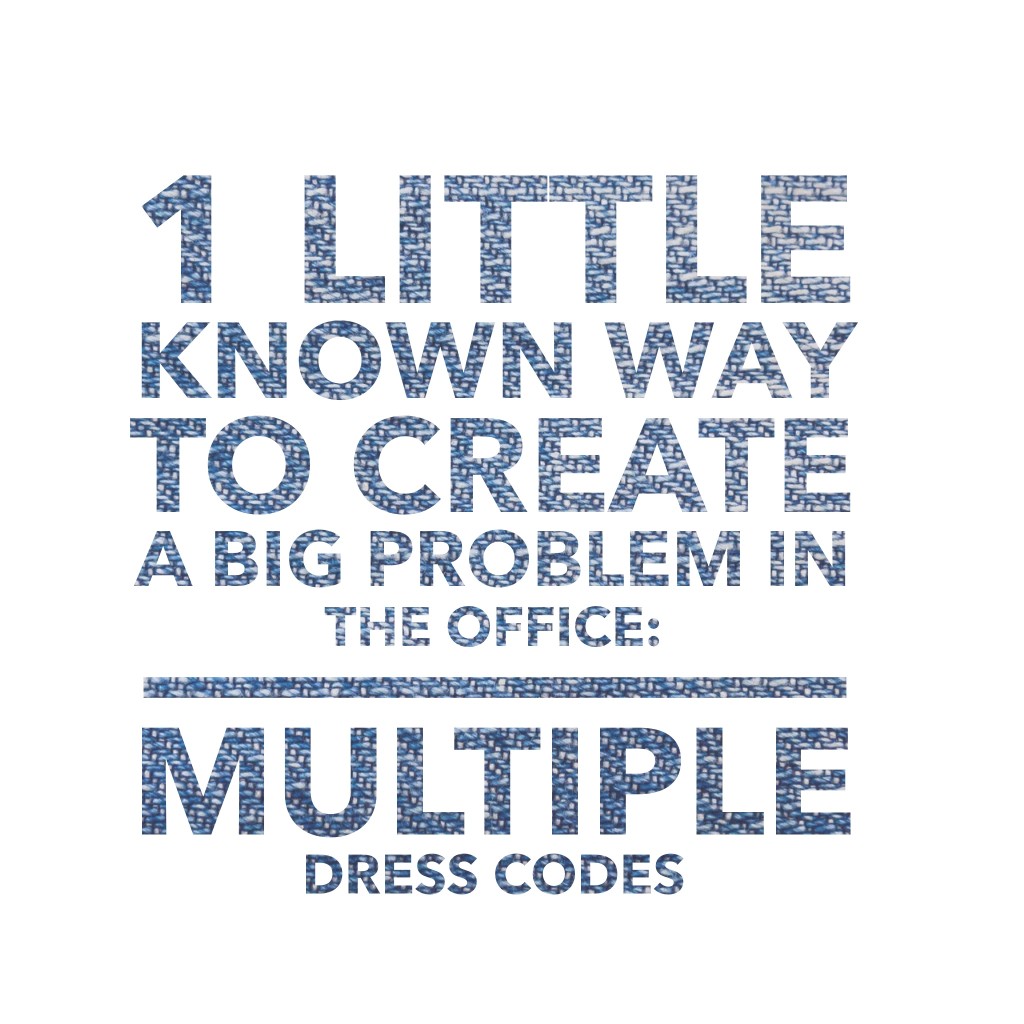1 Little Known Way to Create a Big Problem in the Office:
Multiple Dress Codes
A friend works in an organization in a customer/constituent-facing position. As such, her dress code specifically states that she cannot wear blue jeans to work. However, other people in her building and even in the same suite of offices who do not speak with customers can wear jeans. They can also participate in Casual Fridays, where my friend cannot. She asks me what I think about the rules.
I think those rules stink. That is so totally unfair and unkind to the customer-contact employees. If the clients are coming to the office and can see the other employees dressed casually, the office is environment is perceived by the constituents as something less than professional. It doesn’t matter if the person you are interacting with is dressed professionally. If everyone else moving around the space is dressed down, that is the message the policy sends.
It’s amazing to me that management can’t see this is a problem. I mention to my friend that it’s got to be difficult to manage the differing dress codes within one office in this manner. And then she drops the proverbial bomb. One employee took things to the extreme recently and showed up for work in sweats. Yes, somebody wore baggy clothes that one should wear to the grocery store or to walk the track, to their good government job! I really wonder about people sometime.
This problem is management’s fault. Because their policies are so varied among the staff all working on the same floor, in the same office suite, there is no clear policy that applies to everyone. You can’t run an office with different people working in the same space having different dress codes. There is no wonder that someone took it to the limit because there was no line drawn in the sand about overall office attire.
Management has got to let staff know that the office is The Office. It is a place of business. You’re there because you help solve a business problem. And if customers are serviced in that office space, well then everyone should dress like they are in a customer-facing position because they are. Just because the customer is not sitting at their desk doesn’t excuse them from being appropriately dressed for The Office. The bottom line is, if the customer can SEE them when they enter the office space, then they need to dress professionally, just like their colleagues that are working with constituents face-to-face.
A consistent office policy will help to create a level of professionalism and ensure a feeling of fairness among staff. It’s also very easy to enforce because there are no exceptions to the rules. Policies for attire are developed for a reason because some people are going to stretch the limits. In situations like this, the policy should apply to the whomever works in the office space, not what your title or position happen to be. When you start down that slippery slope of business casual for some and not for others in the same office, you deliver a mixed message to your staff and clients. The attire of the team sends a message about the office environment. What is your office’s attire policy saying about your office environment?
READ MORE: If No Action, Why Is There a Meeting?!
This article covers the kindness pillar of the Living Happier @Work program.



[…] READ MORE: One Little Known Way to Create a Big Problem in the Office […]